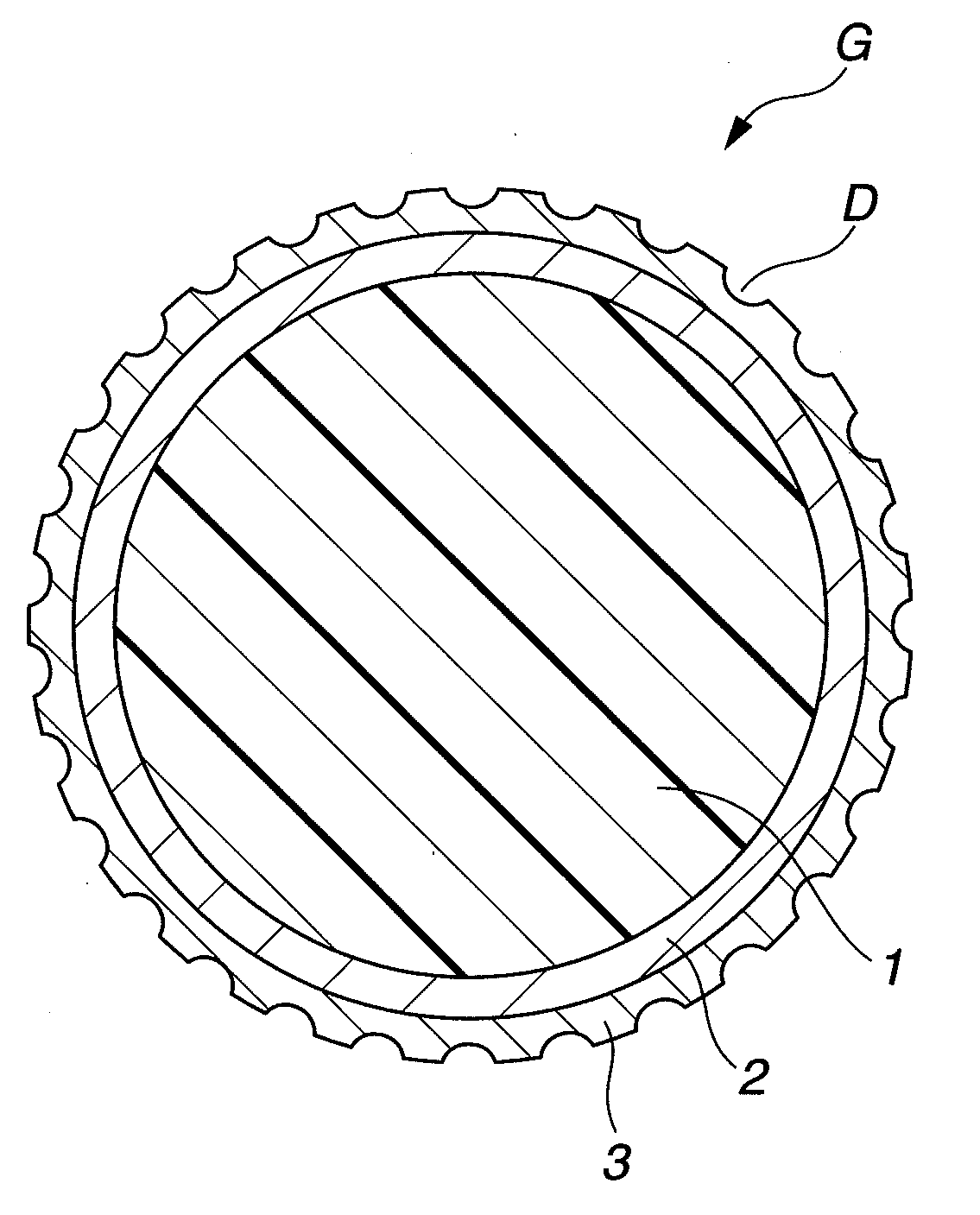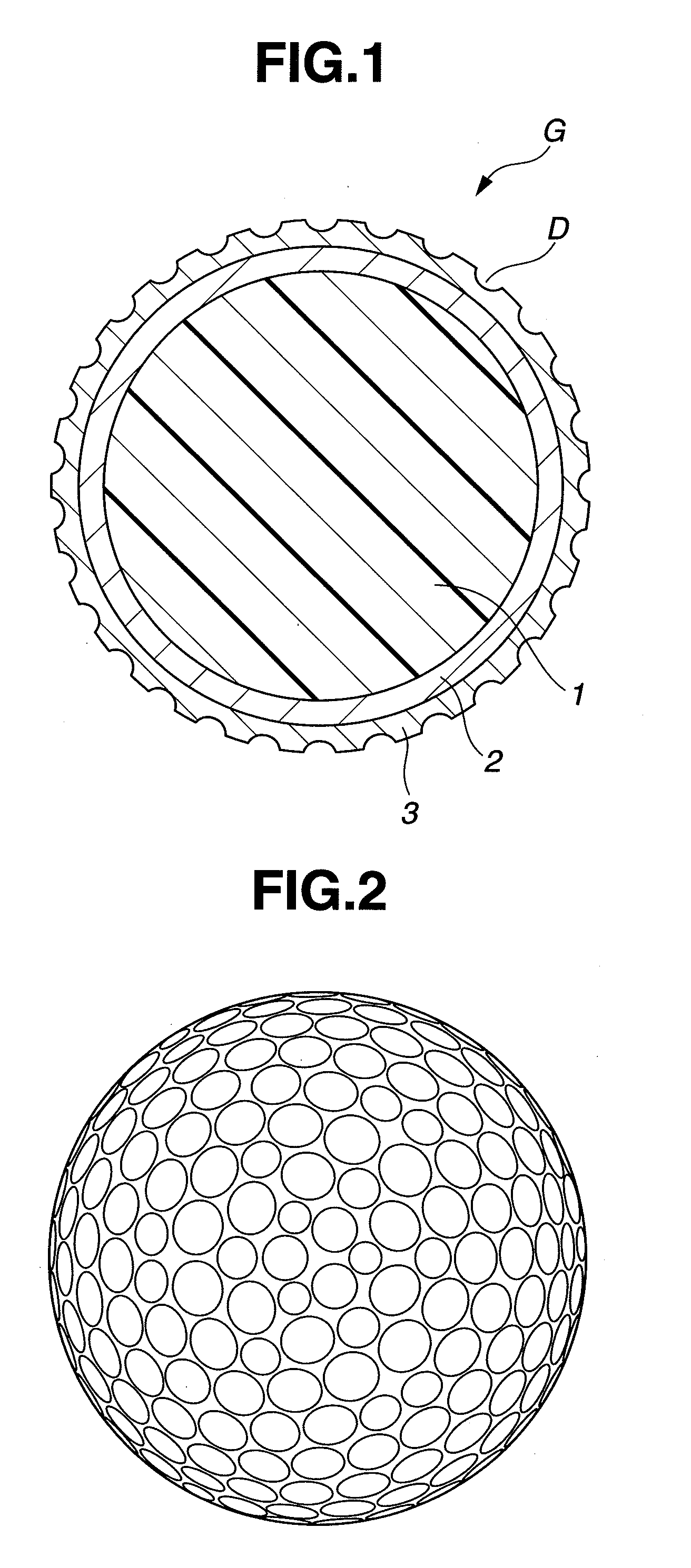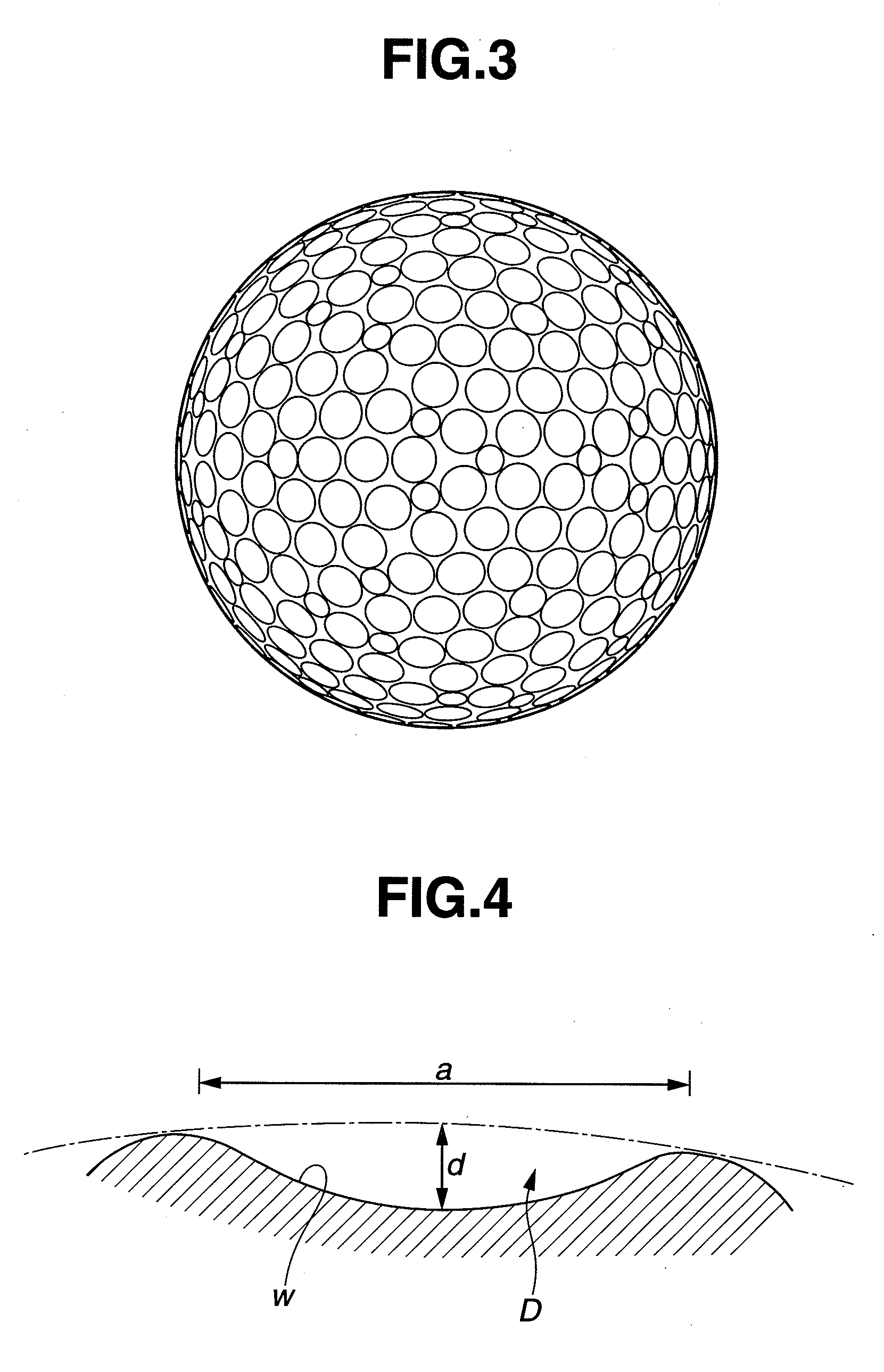Golf ball
a technology of golf ball and ball, which is applied in the field of golf balls to achieve the effects of improving the total distance traveled by the ball, reducing the spin rate, and excellent scuff resistan
- Summary
- Abstract
- Description
- Claims
- Application Information
AI Technical Summary
Benefits of technology
Problems solved by technology
Method used
Image
Examples
examples
[0101]Examples of the invention and Comparative Examples are given below by way of illustration, and not by way of limitation.
examples 1 to 4
, Comparative Examples 1 to 5
[0102]Cores for the respective examples of the invention and comparative examples were produced by blending suitable amounts of an organic peroxide, an antioxidant, zinc oxide, zinc acrylate and an organosulfur compound (diphenylsulfide or the zinc salt of pentachlorothiophenol) in polybutadiene having the trade name BR 730 (available from JSR Corporation) as the base rubber, then vulcanizing the blend under applied heat at 155° C. for 15 minutes. The properties of the resulting core are shown in Table 2 below.
[0103]A cover and an intermediate layer were successively injection-molded over the core in each example using the material A, B, C and D formulations described below. During injection-molding of the cover, dimples were formed in a given pattern on the surface of the cover by means of dimple-forming projections within the mold cavity for creating a given arrangement of dimples. Details of the dimples are given in Table 1 and shown in FIGS. 2 and 3....
PUM
 Login to View More
Login to View More Abstract
Description
Claims
Application Information
 Login to View More
Login to View More - R&D
- Intellectual Property
- Life Sciences
- Materials
- Tech Scout
- Unparalleled Data Quality
- Higher Quality Content
- 60% Fewer Hallucinations
Browse by: Latest US Patents, China's latest patents, Technical Efficacy Thesaurus, Application Domain, Technology Topic, Popular Technical Reports.
© 2025 PatSnap. All rights reserved.Legal|Privacy policy|Modern Slavery Act Transparency Statement|Sitemap|About US| Contact US: help@patsnap.com



